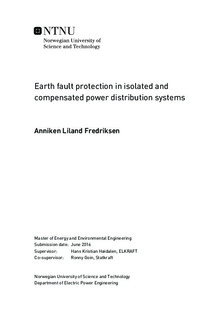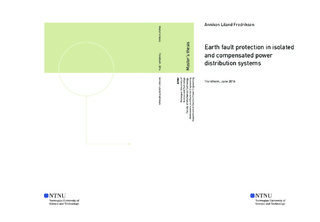| dc.description.abstract | This report is the result of the work with the master thesis written during the spring of 2016 at NTNU, where the main ambition has been to find a relay setting for earth fault protection that can work both in isolated and compensated power distribution systems. In principal, these two systems have different earth fault protection methods.
Earth faults is one of the most common faults in the power distribution system and proper protection against it is therefore important. In certain situations, a different approach to the protection might be necessary than the normal relay settings. If an isolated system fails to operate, the system needs to be operated by other means. If a parallel power system exists, this can be connected to operate the system. It is not given that this parallel power system is also an isolated system. In the event that it is operated as a compensated system, there will be some detection issues for the directional earth fault relays in the normally isolated system. A description of the detection problems that might occur is therefore presented.
A literature survey was then completed to try and find a solution to the described detection problems. The solutions that were found to be most relevant was: (i) non-conventional measuring transformers, (ii) extended function of coil regulator, (iii) extended operating area for the directional earth fault relay, (iv) grouping of parameter settings in the directional earth fault relay, (v) having two parameter settings active simultaneously in the directional earth fault relay and (vi) installing a high ohmic resistance in the neutral point of the transformer.
The extended operating area for the directional earth fault relay was found to be the most feasible solution to be used both in isolated and compensated power distribution system. To see if this was the case, a real power system was modelled in ATPDraw, and simulations were completed with the extended operating area.
The result from the simulations show that the extended operating area is able to detect earth faults according to the Norwegian regulations. The Norwegian regulation states that earth faults up to 3000 Ω needs to be detected and handled in mixed systems. Introducing asymmetry in the modelled power distribution system however, resulted in false detection of earth faults.
An extended operating area for the directional earth fault relay will detect earth faults in isolated and compensated systems according to standards. The modelled power distribution system in ATPDraw is however, built on assumptions and will not be able to represent the real power distribution system to a full extent. Nevertheless, the simulations do give a good indication of what to expect from the extended operating area. | |

